23 December, 2004
Who discovered Antarctica?
The first sighting of the Antarctic continent was probably by one of three men exploring the southern seas at the same time. They were Edward Bransfield, a British naval commander, Nathaniel Palmer, an American seal hunter, and Fabian Bellingshausen, a Russian explorer. It was not until February 7, 1821 that John Davis, actually set foot on the continent, although this was not known until 1955 when his journals were found and checked for accuracy.
The race to reach the South Pole is a study in different ideas about polar exploration and there is reliable information about those efforts. In 1911, two world-famous explorers, Roald Amundsen from Norway and Robert Falcon Scott from Great Britain found themselves in Antarctica at the same time and with the same goal in mind - being the first to reach the South Pole.
Amundsen had a lot of experience traveling in the frozen Arctic regions because his country, Norway, has land in the Arctic. He earned an excellent reputation as an Arctic explorer. He spent time living with Eskimo people in the Arctic where he learned how to use dog sleds to move quickly over long distances of snow and ice. He also had championship skiers on his expedition team and he was also a very good skier. It was his good fortune to have excellent weather along his route to the pole. Scott, on the other hand, tried to use ponies and tractors to get to the South Pole. He did not know how to use sled dogs and none of his team members knew how to ski. The tractors and ponies did not work our very well in the extreme conditions he faced, and he had really bad luck with the weather.
As you may have guessed, Amundsen reached the South Pole first, on December 14, 1911. Scott reached the pole on January 17, 1912, a month after Amundsen. He and his men had pulled all their equipment on sleds themselves to the pole. Their ponies were all dead and the tractors broke down. They arrived exhausted and low on food and fuel. At the pole they found Amundsen's tent with a Norwegian flag flying above it. Amundsen was long gone, but he left them some food and a note informing them that it was he, Roald Amundsen, who had reached the pole first. Scott and his men were very disappointed, but the worst was yet to come. The weather continued get worse and they all died on the return trip; their bodies were found frozen in their tents just 11 miles from the next food supply.
Scott had built a hut at Cape Evans on Ross Island for his South Pole expedition. The hut was later used by another famous Antarctic explorer, Earnest Shakleton. Shakleton's Imperial Antarctic Expedition in 1914 was to travel completely across the Antarctic continent, passing over the South Pole. He planned to finance his expedition by collecting penguin skins for museums in Europe while in Antarctica. He set out from the Weddell Sea on his trip. Meanwhile he had a second group of men travel toward the South Pole from the other side of Antarctica. Their task was to leave caches of food and fuel so that he could use them as he finished the trip. They would only set up a few food caches and then return to their base at the Cape Evans hut and wait for Shakleton to arrive.
Unfortunately, Shakleton's ship was crushed in the Weddell Sea ice before he reached the continent and he had to abandon his plan to cross Antarctica. His second team, at the Cape Evans hut, did not know this. They had problems of their own. They became stranded at when a storm blew away their ship. It was almost two years before they were rescued. When the rescue ship arrived, the men dropped everything and boarded the ship immediately, anxious to get home. One thing they left behind was an emperor penguin on the table inside the hut. As you can see in the picture below, it is still there today, just like they left it and everything else in the hut!
I should mention that it was not until 1958 that Antarctica was successfully crossed. The Commonwealth Transantarctic Expedition also employed two teams working from opposite directions. Sir Edmund Hillary led the cache setting team that left from McMurdo. He was the first to drive a vehicle to the South Pole. The expedition leader, Vivian Fuchs, started from the other side of Antarctica and used the food caches Sir Edmund had set for the final leg of his crossing, finishing the journey at McMurdo.
I should mention that the United States had one notable explorer, Admiral Richard E. Byrd. He was the first to fly over the South Pole in 1929. Byrd's accomplishments are still a subject of controversy today. However, it can safely be said that he mapped most of Antarctica from his airplane and he laid the groundwork for America's future involvement in Antarctica.
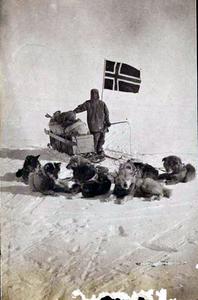
1: The great polar explorer from Norway, Roald Amendsen.

2: Robert Falcon Scott's hut at Cape Evans, where he started his ill-fated expedition to the South Pole.

3: Scott's bed in the Cape Evans hut
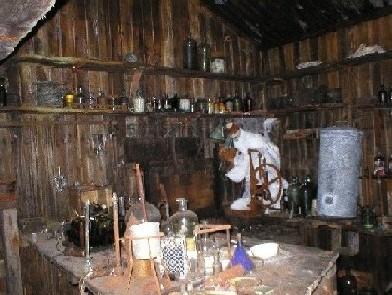
4: The Cape Evans hut is well preserved and almost looks like it was used yesterday; this is the laboratory.
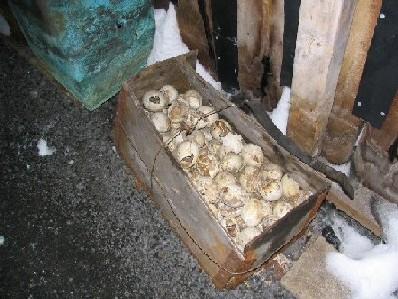
5: A box of penguin eggs collected for scientific research by Scott's expedition; all of Scott's expeditions had a strong scientific effort as well.
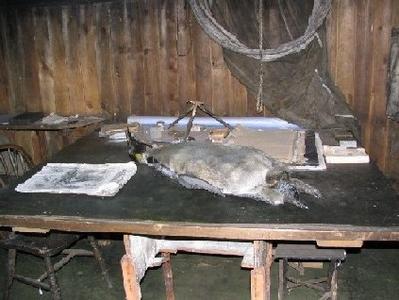
6: An emperor penguin left by Shakleton's Ross Sea team; Shakleton used penguin pelts to finance his expedition to cross Antarctica.
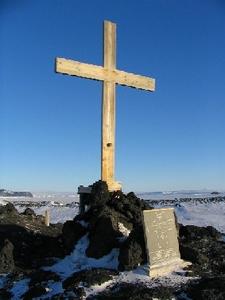
7: A memorial for three members of Shakleton's Ross Sea team who lost their lives laying food caches for the final leg of Shakleton's journey across Antarctica.

8: America's greatest Antarctic explorer was Admiral Richard E. Byrd, founder of a research base called Little America; the base was abandoned many years ago.
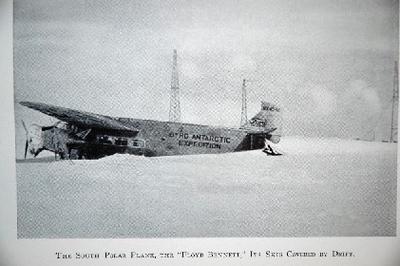
9: Byrd's airplane was named after a pilot who earlier flew with him to the North Pole, Floyd Bennet; Bennet died in a plane crash before Byrd made his historic flight to the South Pole.
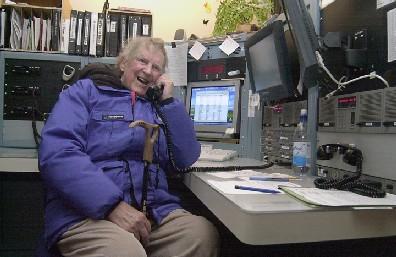
10: Sir Edmund Hillary, the first to climb Mt Everest, was a member of the first expedition to cross Antarctica in 1958; he visted McMurdo Station this past November and told us his story.
Contact the TEA in the field at
.
If you cannot connect through your browser, copy the
TEA's e-mail address in the "To:" line of
your favorite e-mail package.
|
